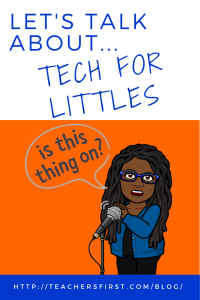As we observe National Kindergarten Day, let’s consider instructional approaches for our littlest learners. The annual observance reminds us of the unique needs of our primary students and the importance of creating supportive learning environments. Among the various approaches, one strategy stands out – the intentional integration of literacy work with other content.
Literacy experiences are essential in the primary grades, and mastering the art of reading opens doors to endless possibilities. Additionally, in the digital age, technology is not just a tool for entertainment; it’s a powerful ally in education. Think about the transformative impact of integrating technology, your content, and the science of reading. It’s a synergy that can unlock potential, especially for young learners and those in underserved communities. Here are five activities to set up for primary students that will do just that.
Use Wriddle for sentence construction. Wriddle (reviewed here) cleverly strengthens phonemic awareness and phonics by encouraging sound manipulation and letter-sound relationships. Students can write sentences, read them aloud, and then illustrate them using this website. Students can summarize a text read during science or social studies or even write and illustrate a math sentence. This activity encourages encoding and decoding skills as students translate their thoughts into written words and vice versa. The illustration component reinforces comprehension by connecting text to visual representation.
Play with Wordwall at a workstation. Using Wordwall (reviewed here), you can use content area vocabulary to create interactive learning activities that bolster phonemic awareness and syntax development. Use the templates to quickly create a cloze activity, a word sort, or flash cards. Target specific reading skills using the unjumble, anagram, and complete the sentence template. Students gain a deeper understanding of language structure and phonics patterns by manipulating words and sentences.
Build Fluency with Artificial Intelligence. Fluency—that smooth, effortless reading—is crucial to comprehension. Students need to practice, some more than others. Applications like ReadAlong by Google (reviewed here) and Microsoft’s Reading Coach (reviewed here) provide personalized fluency practice sessions tailored to individual student needs. Regular practice with these tools enhances fluency and accuracy. As students read aloud, they receive immediate feedback, helping them self-correct and improve. As a bonus, ReadAlong with Google has a section for Math & Science books. Microsoft’s Reading Coach can create a passage on a topic using AI or use a passage that you already have.
Listen to age-appropriate podcasts. Podcasts can significantly improve listening comprehension. They expose students to diverse vocabulary and complex sentence structures essential for reading comprehension. Listening to podcasts can also foster a love for storytelling. You can curate podcasts aligned with classroom themes or literature studies, encouraging students to listen, comprehend, and engage with the content actively. Peruse the TeachersFirst special topics collection of podcasts for students to find some you like. Need more time to curate your collection? That’s OK. Shannon McClintock Miller has curated a selection (reviewed here) for elementary-level students.
Play Teach Your Monster to Read. You can’t customize this one with your content, but Teach Your Monster to Read (reviewed here) is an excellent game-based learning instructional tool. This interactive platform combines phonics and fun, promoting engagement and motivation. It’s designed to adapt to each child’s learning pace, ensuring personalized instruction. The phonics-based activities help children master letter sounds, blending, and sight words.
These are just a few examples of how technology can be a powerful tool in supporting reading instruction. Incorporating these activities into the curriculum can make reading a vivid and enjoyable journey for our young learners. Do you have a favorite tech-powered reading activity? Share your thoughts and experiences in the comments below! Let’s harness the power of technology to nurture a generation of confident and capable readers.


